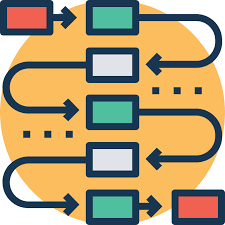
AI
The artificial intelligence and examples around us. It is likely that you have already used it on your daily commute, searching the web or checking the latest update on social networks. AI has a huge effect on your life as well as your business and in this article, we will review some examples of AI that you can implement in your organization.
Artificial intelligence examples that you can apply in your business
Artificial intelligence involves giving machines and programs the ability to think like a human being. Companies are increasingly looking for ways to put this technology to work to improve their productivity, profitability and results.
Business intelligence: examples of business management
We have been using different AI applications in business management for some time. Among the best-known examples are the following:
- Spam filters in email or smart categorization features in email.
- Smart personal assistants like Siri or Cortana.
- Automation of processes, predictive systems or advanced computer security technologies.
- Online customer support (BOTs) applications.
- Smart devices and programs that adjust based on user behavior.
Artificial intelligence: examples in electronic commerce
When talking about artificial intelligence, examples such as product recommendations or personalization as a service are some of the first that come to mind in the field of electronic commerce. But the e-commerce and artificial intelligence alliance goes much further, delivering news such as:
- smart searches and relevance features
- purchase predictions
- fraud detection and prevention for online transactions
- dynamic price optimization based on machine learning
Artificial intelligence: examples in marketing
Incorporating AI into marketing increases profitability of stocks. Among the artificial intelligence applications and their examples in this field, the following stand out:
- Data analysis and customer segmentation.
- Recommendations and content curation.
- Automated web design and news personalization.
- Language recognition, as well as patterns and images.
- Sentiment analysis.
- Predictive customer service.
All of these artificial intelligence examples illustrate only the advances of AI in some fields, there are many more and there are still new ones to come, as the pace of development of this science continues.
Limitations of artificial intelligence: examples
However, while the benefits of artificial intelligence to the business are many, there are also certain barriers and disadvantages to be aware of.
One of the main limitations of AI is cost. Creating smart technologies can be expensive, due to their complex nature and the need for ongoing repair and maintenance. Software programs need regular updating to adapt to the changing business environment and, in the event of a failure, present a risk of loss of code or important data. Restoring this is often time consuming and expensive.
Other limitations of this technology have to do with:
- Integration challenges.
- Lateness caused by implementation times.
- Usability and interoperability problems with other systems and platforms.
- Errors due to lack of understanding of the latest generation systems.
When deciding whether to use technology powered by artificial intelligence, aspects such as:
- Complexity of technology.
- Ethical issues.
- Protection of the privacy of clients and users.
- Loss of control over some business decisions that can affect the strategy.
- Possible lack of transparency.
While these risks can’t be ignored, it’s worth bearing in mind that advances in AI can, for the most part, create better businesses and better lives for everyone. If implemented responsibly, the potential of artificial intelligence is great, and examples such as those reviewed in this post demonstrate this.

 A strategic planning process is something with which we are all familiar, consciously or not.
A strategic planning process is something with which we are all familiar, consciously or not.